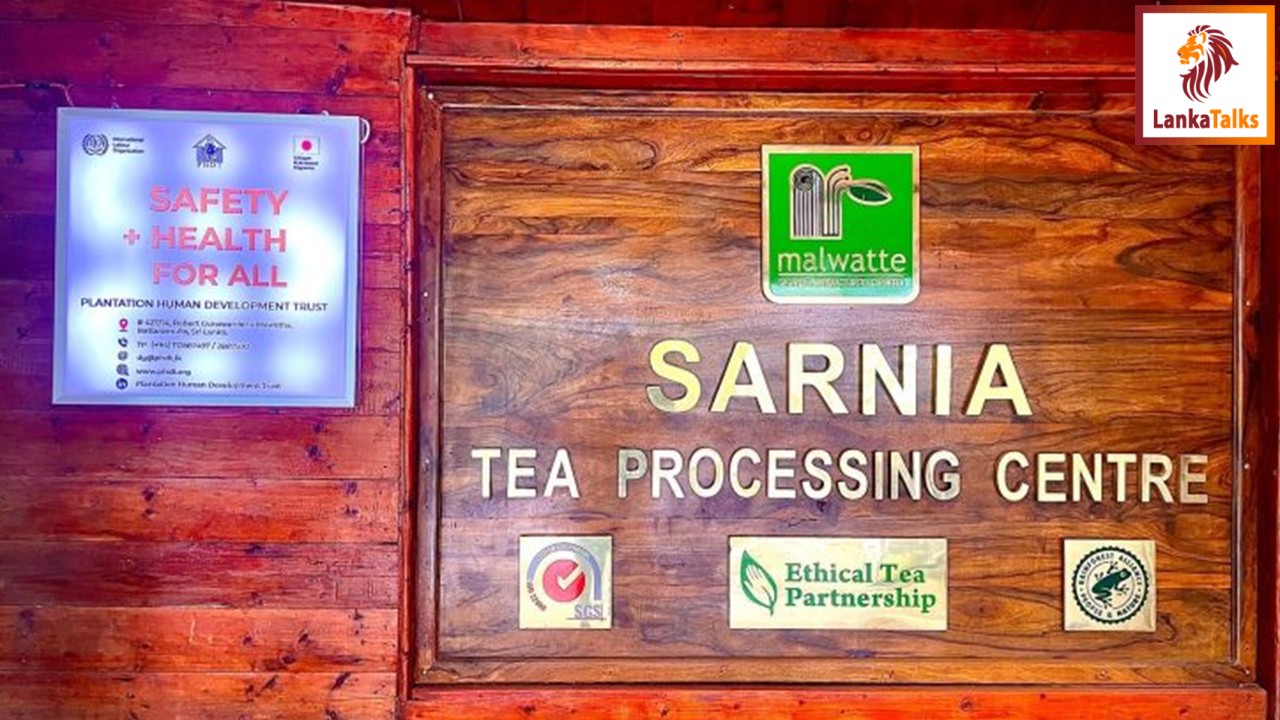Nestled amidst the breathtaking landscapes of Uva, Sarnia Estate has stood the test of time, transforming from a coffee plantation in the 19th century into a beacon of the highest quality tea cultivations, while preserving its rich historical essence. Bordering the Randenigala Reservoir and the wild life sanctuary of Randenigala, Sarnia stands on the eastern slope of a picturesque mountain range rising from an elevation of 900 meters at the lowest to 1180 meters at the highest point on the foothills at Narangala Mountains.
It is a lesser-known fact, outside of the plantation industry is the significant influence of Scottish planters on then Ceylon's agricultural landscape. The Scottish impact dates back over 200 years, with figures such as James Taylor pioneering tea cultivation in the island. Among these notable figures, was E.C. Sweeting, who contributed significantly to the island’s transition from coffee to tea, while establishing advanced agricultural practices within the tea industry.
Sri Lanka experienced a coffee boom in the 1860s attracting investment from London and leading to the rapid expansion of plantations across the central highlands. It was during this period that E.C. Sweeting established Sarnia Estate in 1864, set amidst the lush slopes of the Badulla-Hali Ela region. The term ‘estate’ itself, widely used across Sri Lanka’s plantations, is a legacy of Scottish influence.
Originally known as ‘Kandegadera’ in Tamil, Sarnia flourished under the coffee trade, its fertile soil yielding a promising harvest. However, by the late 19th century, a devastating leaf disease led to the collapse of Sri Lanka’s coffee industry, marking the end of an era. The crisis, however, paved the way for a new chapter—tea.
A New Dawn: The Rise of Tea
The introduction of tea at Sarnia in the early 1880s brought about a significant shift, setting the stage for its growth. By 1905, the estate was fully converted into tea cultivation, under the stewardship of the Scottish Trust & Loan Company of Ceylon and management by Cumberbatch & Company. The estate thrived, expanding to 570 acres of tea, with an additional 170 acres dedicated to timber and grasslands.
The Scots left an indelible mark on Sarnia, shaping not only its agricultural practices but also its cultural landscape. The terraced hillsides, stone pathways, and colonial bungalows bear testimony to their meticulous craftsmanship and unwavering dedication. For over seven decades, Sarnia remained under Scottish ownership. However, in 1975, the Sri Lankan government nationalized the plantation sector under the Land Reform Act, bringing Sarnia under the management of the Janatha Estates Development Board (JEDB). Though nationalization aimed at greater economic equity, state management struggled to maintain profitability.
Recognizing the need for reform, the government privatized the sector in 1992, leasing estates to regional plantation companies (RPCs). Sarnia was placed under Malwatte Valley Plantations, breathing new life into its operations and reinvigorating its global reputation since 1999. MVPL is managed by Wayamba Plantations.
A Blend of Tradition and Modernity
Today, Sarnia Estate remains one of the largest tea plantations in the Uva district, covering 311.29 hectares. Sarnia Estate’s continuing success is built on a legacy for unmatched quality that stems from the quality of leaf grown on its verdant hills. By ensuring meticulous care for these Old Seedling Teas – which still comprise over 70% of the estate’s total cultivation – Sarnia has maintained a unique premium quality tea with direct roots back to the 19th and early 20th centuries.
The estate experiences a unique climate, with the northeast monsoon bringing rainfall from October to January, and dry, gusty winds from June to September.
This ultimately results in a liquor that is characterized by a smooth, golden amber hue and a flavor profile that perfectly blends briskness and mild sweetness, with a lingering, slightly honeyed finish that enhances its overall depth making it a delightful and refreshing experience. This distinct Uva flavour makes Sarnia’s teas among the most sought after by tea connoisseurs worldwide.
The estate is home to a harmonious blend of Tamil and Sinhalese communities, with a workforce of over 680 people and a resident population exceeding 4,100 Sarnia has invested in its workers, establishing housing projects along with the Plantation Housing and Development Trust, crèches for children, and cooperative societies that uplift their quality of life. Crèche’s are operated for the benefit of the children of workers and free feeding programs are conducted for the children in these crèches.
Malwatte Valley shares 5% of the estate profits with its workforce annually it has distributed over 290 million to its workers as at date.
A Commitment to Excellence and Sustainability
Sarnia Tea Processing Center, perched at 972 meters above sea level, produces over a million kilograms of made tea annually. It has embraced sustainable practices, utilizing renewable energy to power its operations. This Processing Center is equipped to manufacture two different types of orthodox tea, which is Orthodox small leaf type tea using Rotorvane machines and Orthodox large leaf type tea using Rollers. It also has the facility to produce Green Tea. More recently, this center has developed the capability to produce high-quality specialty teas as well.
Certified under, Rainforest Alliance, HACCP, GMP & ISO 22000 for food safety, environmental protection and management, the estate upholds rigorous standards to ensure its teas meet international benchmarks, manufactured adhering to Good Manufacturing and Management Practices under strict hygienic conditions. The estate’s flagship brand, ‘Sarnia Plaiderie,’ continues to fetch premium prices at the Colombo Tea Auctions, a testament to its superior quality.
Sarnia’s excellence has been recognized globally, winning awards at the Ceylon Specialty Tea of the Year competition in North America and Japan. These accolades reaffirm its status as a producer of world-class tea, revered by experts and enthusiasts alike.
The tea industry however is plagued with an acute labour shortage and hence Sarnia has commenced automating its production lines. Malwatte Valley Plantations PLC has an in-house team who are systematically working on improving this further. The acute shortage of workers along with the high fluctuation of global commodity prices has forced Sarnia to look in the direction of diversifying its crop portfolio. In this regard it has gone in for the cultivation of Avocado targeting the export market. Planting material has been imported from various countries to cater to the hunger for this fruit internationally. The crop requires much less labour than Tea and is highly profitable. This would therefore make good entry into Sarnia’s portfolio to face any challenges that lie ahead. Apart from above labour-saving strategies Sarnia has also commenced mechanized harvesting of green leaf. This has resulted in improved leaf standard and finally a better end product. This would be expanded on in the months ahead.
Preserving the Past, Embracing the Future
From its humble beginnings as a coffee plantation to its transformation into a premier tea estate, Sarnia embodies the resilience, beauty, and heritage of Sri Lanka’s plantation industry. It stands as a living monument to the visionaries who carved their dreams into its central hills and the generations who have nurtured it through time.
As Sarnia moves forward, it does so with a deep respect for its past, a commitment to sustainability, and an unwavering dedication to crafting the finest teas—a legacy steeped in history, yet ever-evolving with the future.



You Must be Registered Or Logged in To Comment Log In?



 A.R.B.J Rajapaksha
A.R.B.J Rajapaksha



